Business Bento November 2021
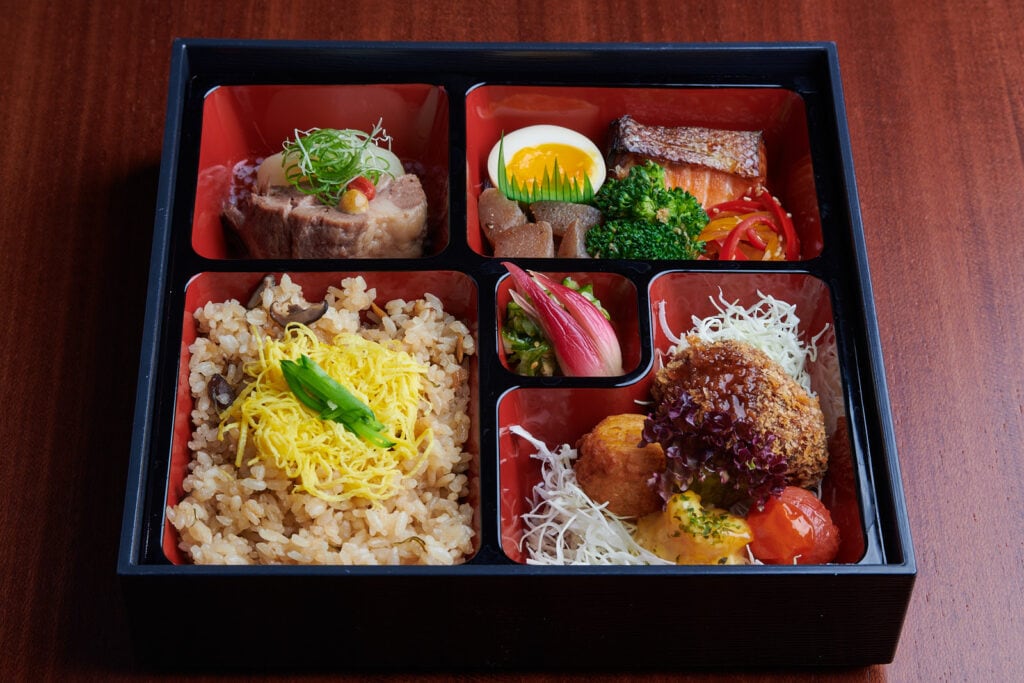
Wir hatten im November 2021 mal wieder die Möglichkeit für eine japanische Firma in in München ein besonderes Makunouchi-Bento à la SUSHIYA sansaro zu zubereiten. Es ist eine große Freude für uns, dass uns japanische Firmen immer wieder die kulinarische Verantwortung für wichtige geschäftliche Meetings übertragen. Unser Chefkoch hat sich sehr genau überlegt, was er […]
Sake Tasting Flight November 2021
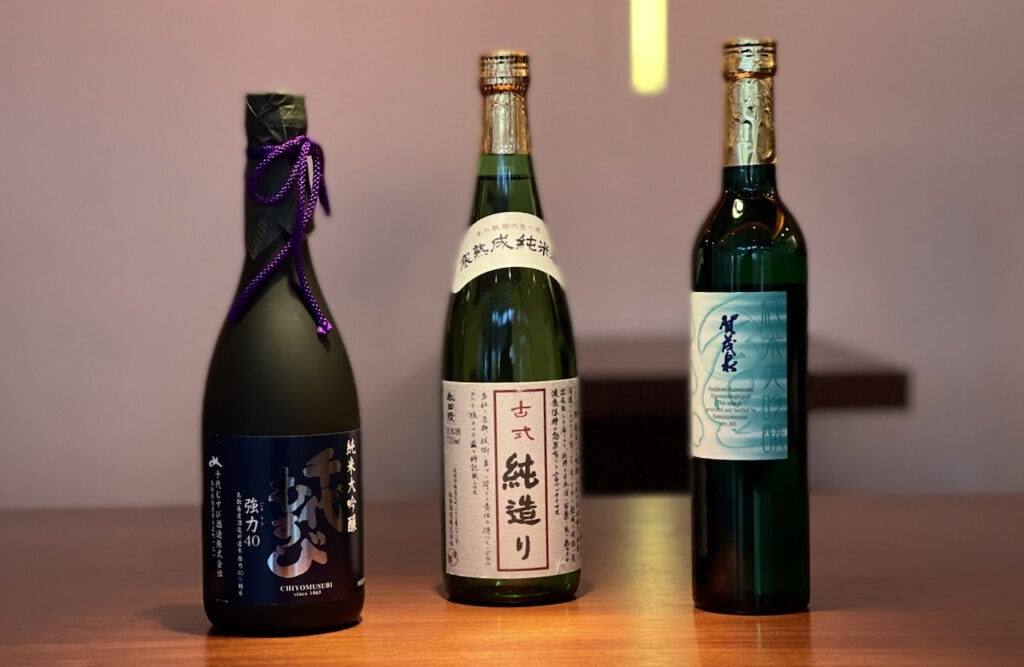
Ab dem 7. November 2021 gibt es wieder eine neue Zusammenstellung unseres beliebten Sake-Tasting-Flights im Restaurant sansaro in München. Ein wunderschöner goldener Herbst mit bunten Blättern an den Laubbäumen. Dies ist die Zeit des Jahres, in der Sie eine große Auswahl an köstlichen saisonalen Produkten finden können. Die perfekte Wahl für diese Jahreszeit ist Sake […]
Whisky Tasting November 2021
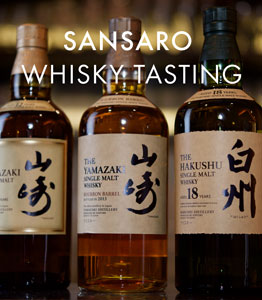
Nach der langen, lähmenden Corona-Pause waren wir gespannt, wie unser Whisky-Tasting im November 2021 gelingen würde. Trotz einem erfolgreichen kleinen Sake Tasting im Oktober waren wir zugegebenermassen doch noch etwas nervös, als das Whisky-Event auf allen 35 Plätzen binnen kürzester Zeit ausgebucht war und sogar noch einzelne Stammgäste um einen zusätzlichen Platz baten. Die Erwartungen […]
Sake Tasting October 2021
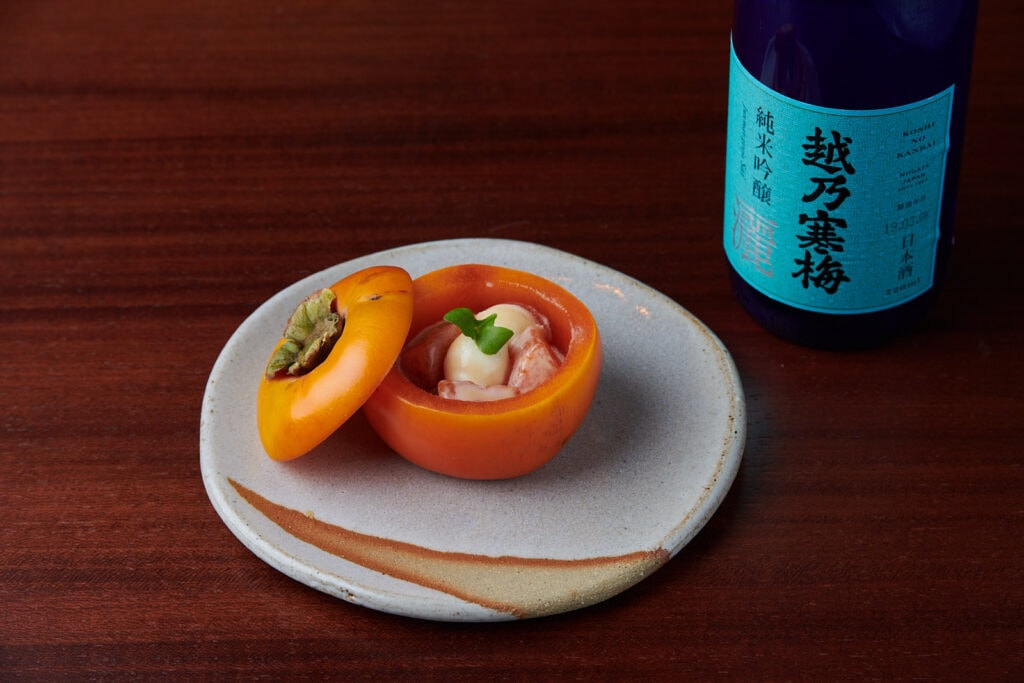
Rückblick auf das Sake-Tasting vom Oktober 2021 Ein wundervolles kleines Mini-Tasting-Event haben wir am Sonntag nachmittag bei schönstem Wetter abhalten dürfen. Eine kleine Gruppe von Gästen, überwiegend Wiederholungstäter die schon viele Tasting-Events besucht haben, hatte sich bei uns eingefunden, um alles über Sake zu erfahren und die neusten Kreationen von uns zu verkosten. Das regelmässig […]
Mini Kaiseiki Menu Autumn 2021
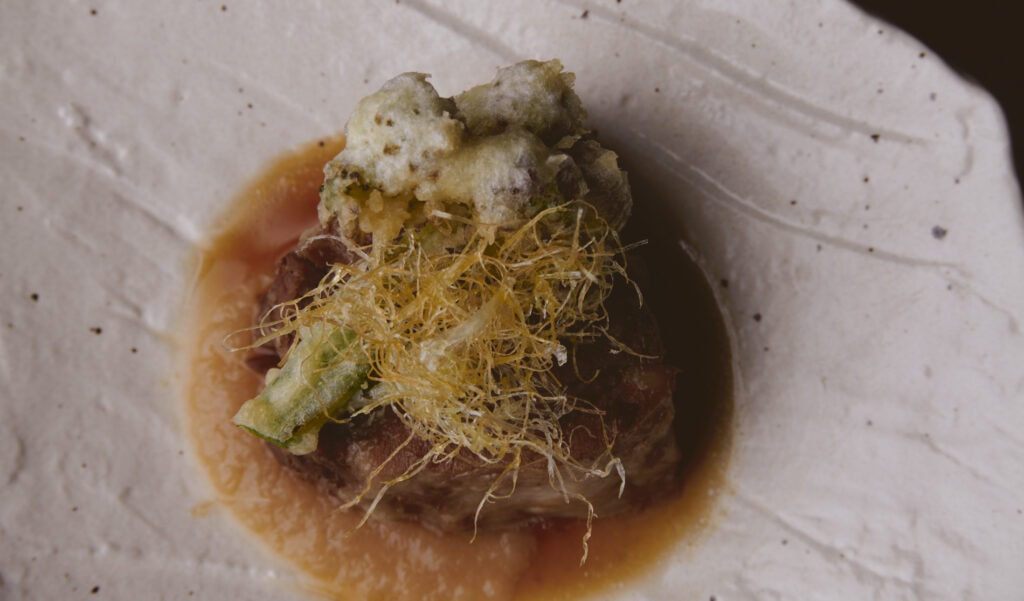
Inspiriert durch ein besonderes, aufwändiges Menü, welches wir kürzlich für einen Stammgast zum 65. Geburtstag ausrichten durften, hat unsere Küche ein besonderes saisonales Menü entwickelt, das es nur für begrenzte Zeit gegen wird. Probieren Sie jetzt unser saisonales Mini Kaiseki Menü Herbst 2021, die Kunst der hohen japanischen Küche in 3 oder 4 Gängen. Sashimi […]
Mother's Day & Father's Day 2021

Unser Bentō zum Muttertag 2021 Das Muttertags-Bentō ist in diesem Jahr eine leckere, aber auch eine ganz besonders gesunde Zusammenstellung japanischer Kleinigkeiten. Denn gerade in diesen Zeiten soll ein schönes Essen nicht nur glücklich machen, sondern auch der Gesundheit förderlich sein. Gesund & fein ab der Vorspeise Unser Küchenteam hat (anstelle der sonst in einem […]
Azuki Cheesecake
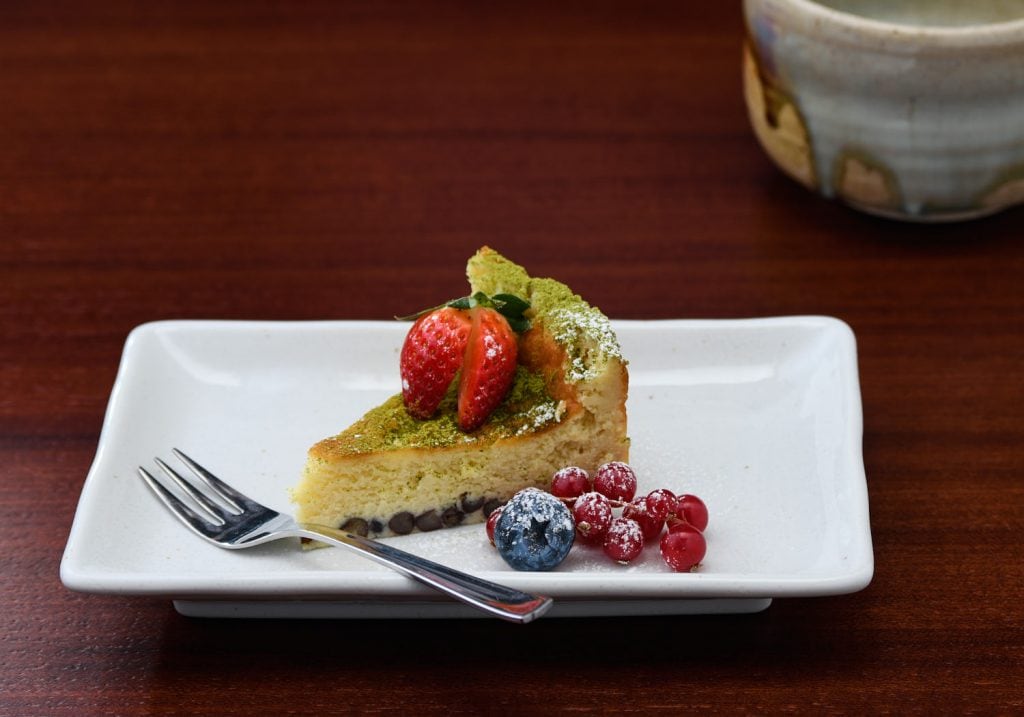
Unser Azuki-Chocolate-Cheesecake, der sich seit ein paar Wochen immer wieder als Dessert auf der Tageskarte in unserem Liefer- und Abholservice findet, wird ausgesprochen gut von unseren Kunden angenommen. Haben Sie ihn schon probiert? Süssigkeiten aus Bohnen Bohnen werden in allen möglichen Formen rund um die Welt gegessen — aber soweit wir wissen, werden süssliche Gerichte […]
Asparagus Sushi 2021 in SUSHIYA sansaro
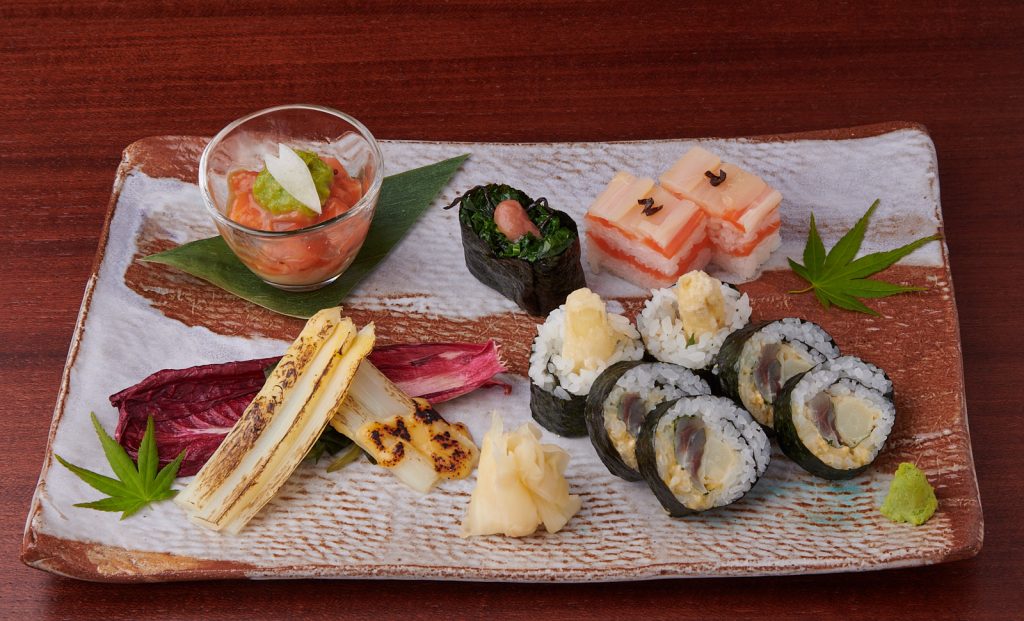
Trotz Lockdown lassen wir uns die Freude an gutem und vor allem saisonalen Essen nicht nehmen und präsentieren im Liefer- und Abholservice vom Restaurant sansaro in München unseren Beitrag zur Spargelsaison 2021: Spargel Ajikurabe 2021 Spargel-Sushi hat eine lange Tradition bei uns im Restaurant sansaro und sogar darüber hinaus: schon 2006, als wir in der […]
SUSHIYA sansaroが2007年からお勧めしているシュタイン醸造所のビール
私たちがシュタイン醸造所のビールを選んだ理由 ドイツ国内には1500を超える醸造所があります。 うち40%近くを占める600以上の醸造所がミュンヘンを州都とするバイエルン州に存在します。 ミュンヘンにも世界的に有名な醸造会社を含めいくつのもの醸造所がありますが、SUSHIYA sansaroでは数あるバイエルン州の醸造所の中から大量生産の大手醸造所ではなく民間醸造所のSchlossbrauerei Stein(シュロスブラウアライ シュタイン: シュタイン醸造所)のビールを選びました。 Sansaroのオーナーはもともと寿司を食べる際に日本のビールを好んで飲んでいました。ビールも寿司にあうと思っていたこと、またオーガニック食材を使うことを重要視しており、レストランオープン当時から当店の寿司スタイルにあうオーガニックのヴァイスビール(小麦ビール)を当時のキッチンチームと探していました。そして2007年にたどり着いたのが „Heinz-vom-Stein“のヴァイスビールです。当店のお客様にも評判で、同社の他のビールもとてもおいしいことから、シュタイン社のビールを取り扱うことができたことをうれしく思っています。 シュタイン醸造所 バイエルン州の州都ミュンヘンより南東に100㎞程離れたシュタイン醸造所は湖やキームガウ・アルプスなどの自然に恵まれたキームガウ地方にあるお城の醸造所です。ここでは1489年からビール醸造が行われています。シュタイン社のビールはミュンヘンではなかなか手に入りませんが、オーガニックバリエーションのビールでしたらオーガニックマーケットでの取り扱いがあります。 シュタイン醸造所のこだわり 歴史ある伝統的な醸造文化とモダンな技術・設備によって信頼の品質を守っています。 500年以上の歴史を持つ世界最古の食品法「ビール純粋令」ビールの原料は麦芽、水、ホップ、酵母のみを使用することを守り、原材料にもこだわりを持っています。 シュタイン醸造所は地元キームガウと深く結びついており、原料にはキームガウの100軒以上の農家が栽培した大麦を使用、2015 年から大麦の有機栽培も行われシュタイン醸造所ではオーガニックビールも醸造しています。 また原料のクオリティー維持のため、農家へ品質証明のある種の使用や輪作の調整をリクエストしています。 ビール醸造にとって要になる水にも秘密があります。 醸造には敷地内にある井戸水が使用されますが、それはキームガウの山々を源泉とした上質なミネラルウォーターです。 シュタイン社には他では見られない天然の岸壁セラーがあり、ここでビールが熟成されます。ビールの種類によって4〜6週間、味を仕上げるため、そして商品のクオリティーを考えじっくりと時間をかけて熟成させるのです。 岩壁の中腹には、12世紀に造られた盗賊騎士Heinz vom Stein(ハインツ フォム シュタイン)の岩窟城があります。シュタイン社のビール醸造所見学には岩窟城の見学も付属されており、歴史ある岩窟城とシュタイン社のビールがどのようにしてつくられているのかご覧いただけます。 こだわりをもったシュタイン醸造所のビールはヨーロピアン・ビア・スターやドイツ農業協会(DLG)コンテストでの金賞を含め様々な賞を受賞しています。 サスティナブルな醸造 近代的な設備によって、ここ数年は水の使用量を20%削減、水力による電気発電で消費電力の99%を自社で生産しています。 また自社のビールや清涼飲料水の売り上げの一部は、地元トラウンシュタイン自然環境連盟の高原放牧地の開墾や野生の果物畑の保存などのプロジェクトの支援となっています。 シュタイン醸造所のホームページ https://www.steiner-bier.de/ サンサロでお楽しみいただけるシュタイナービール ラインアップ STEINER Hell (シュタイナー ヘル) ヘレス アルコール度数: 4.9% 色: 明るい金色 分類: 下面発酵 ミュンヘンや南バイエルンではビールといえばヘレスというほど定番。 名前のHelles (へレス) はドイツ語で「hell (色の薄い)」から来ており、淡色麦芽を使っているので淡い色をしています。 麦芽由来の甘みがあり、ホップの苦みが少なくマイルドな味わい、のど越しよくライトで飲みやすいビールです。 STEINER Export (シュタイナー エクスポート) エクスポート アルコール度数: 5,3% 色: 金色 分類: 下面発酵 古くは名前の通り輸出を目的に造られていた為、日持ちを考えて他のビールよりアルコール度数がやや高く、殺菌作用のあるホップも多く使用していることからホップの程よい苦みが効いています。 ミディアムボディでフレッシュなビール、リピーターも多く、当店スタッフもお気に入りのビールです。 STEINER […]
Easter 2021 - in search of the (organic) eggs

Diesmal hat unser Küchenchef eine Box entworfen, die einige moderne Gerichte der alltäglichen, durchaus rustikalen japanischen Küche enthält, die die ganze Familie satt machen kann. Die bunten Farbtönungen drücken die Freude auf den nahen Frühling aus – und natürlich heisst die Aufforderung: finden Sie die (Oster-)Eier! 😉 ACHTUNG: Wie immer sind das Oster-Bentō 2021 und […]